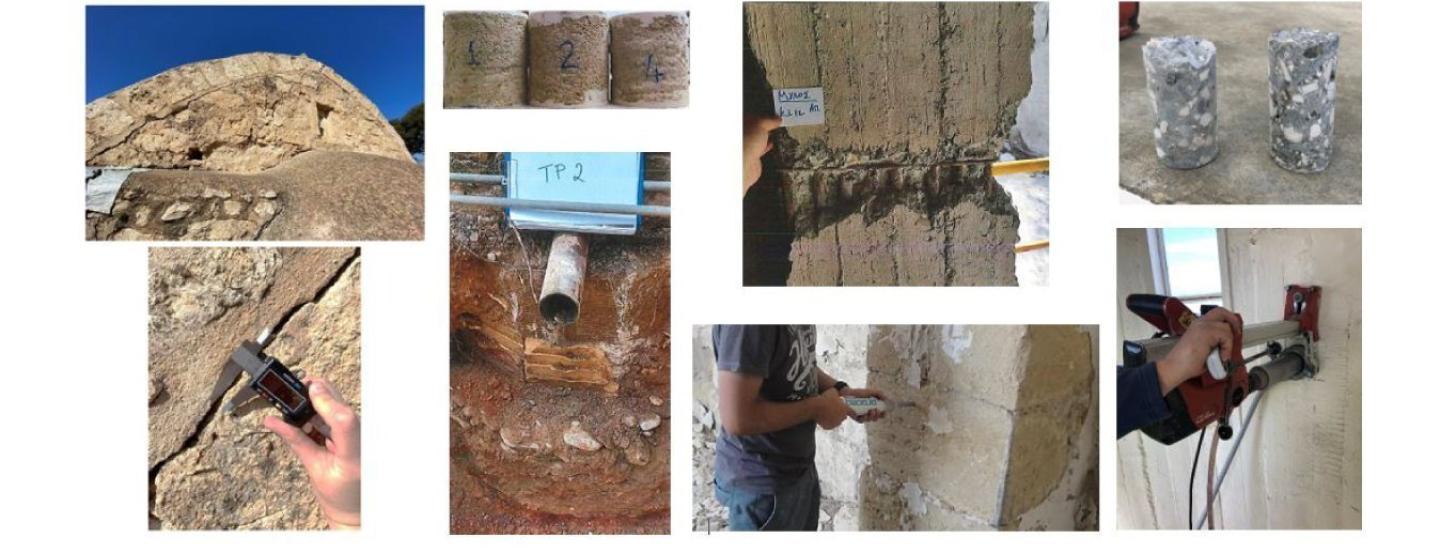
THE ROLE OF IN-SITU TESTING & MONITORING IN EXISTING STRUCTURES
When dealing with existing structures, whether they are made of contemporary building materials such as reinforced concrete or steel, or traditional materials with the use of masonry and/or timber structural elements, the need for an accurate representation of their structural composition is necessary for the structural/seismic assessment to be carried out.
Existing structures are usually described by a variety of unknowns, thus the level of uncertainty of any diagnosis on existing buildings is drastically increased by the lack of information regarding their geometry, structural system, material characteristics, building design codes used etc. That said, construction materials testing along with the appropriate geological and geotechnical investigation can contribute to the correct evaluation and assessment of existing structures since they provide adequate documentation on the material properties and ground conditions, which subsequently result in a reliable numerical structural model to be analyzed.
Through a geological and geotechnical investigation, information regarding the physical properties of the soil and rock can be obtained along with the determination of the existing foundation type, soil-structure interaction and boundary conditions. In addition, in-situ material testing and experimental laboratory testing are crucial for the correct determination of the material’s physico-mechanical properties, dimensions and chemical composition of the building materials. Material testing can be categorized into NDT (non-destructive), MDT (minor-destructive) and DT (destructive-laboratory testing), while the types to be used are chosen depending on the structure that is to be assessed. Furthermore, the correct documentation of the building materials provides sufficient data for the selection of compatible materials in case of need for restoration/strengthening of the load resisting system (LRS).
Structural analysis plays an important role in the diagnosis and safety evaluation of an existing building because it enables us to obtain quantitative predictions on the response of the building when subjected to different actions, whether that building is to be designed for expanding with additional floors, change of use or simply structurally and/or seismically upgraded.
The correct data extracted from the in-situ investigations, which corresponds to a good level of knowledge, can make a significant difference to the results of the structural model since they create a model closer to the real building configuration and allow us to have greater confidence in these results. Moreover, when retrofitting methodology is to be observed, optimum results by means of cost-efficiency and less invasiveness can be obtained.
Structural Health Monitoring (SHM) is another huge asset in the building assessment plan, which provides a long-term evaluation of the bearing capacity of a structure and its structural condition through ongoing measurements of its static and dynamic response to various serviceability and environmental causes. The SHM procedure constitutes an integral part of the decision of the maintenance, conservation and strengthening methodology.
Here at PSA LLC, we offer a high level of technical knowledge and practical support in providing the guidelines and technical specifications for the application of the correct decision of material testing, monitoring as well as maintenance plan to be performed.
You can discover more about our services on our Website.